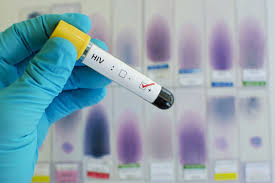Source: silive.com
STATEN ISLAND, N.Y. — Last month the New York City Department of Health and Mental Hygiene released a report about HIV cases on Staten Island 2018, and it was the lowest year of new diagnoses since 2014.
HIV stands for human immunodeficiency virus, and it attacks the body’s immune system. It is a virus that can lead to acquired immunodeficiency syndrome, more commonly known as AIDS.
Nationally, the annual number of new HIV diagnoses have remained stable in recent years. On Staten Island, there has been a decline by more than half between 2016 and 2018.
In 2018, there were 31 new HIV cases on Staten Island, which is 2% of all cases in the city. This number cut the 2016 diagnoses, 77, by more than half, the report says.
Majority of those diagnosed, 22, were men, with only seven being women and two being transgender, the report details.
On Staten Island, HIV was most common among black people, with 18 being diagnosed in 2018. Among the diagnosed were also seven white people and six Latino/hispanic people, according to the report.
HIV was most prevalent in 20 to 29 year olds on Staten Island, according to the report. There were a steady five diagnosed within each decade between 30 and 59 years old. There were three cases in 60+ year olds, and only one person between the ages of 13 and 19 years old was diagnosed.
Men who have sex with men (MSM) were identified as the highest risk on Staten Island in 2018, with 13 diagnoses. Heterosexual contact followed closely with 12 diagnosed, the report says.
Transgender people who had sexual contact only had two diagnoses, and MSM with a history of injection drug use had one diagnosis.
All of the diagnoses on Staten Island were in people who were below the federal poverty line, according to the report.
Staten Island is below the citywide level of timely initiation of care. Timely initiation of care refers to patients who received first CD4, viral load, or genotype drawn within 30 days of diagnosis. Staten Island’s rate was 68%, while the city rate was 84%.
A smaller proportion of women (57%) and transgender people (50%) received timely initiation of care than men (73%). There was also a significantly low number of Latino/hispanic people (33%) who received care compared to black people (78%) or white people (71%) , according to the report.
Staten Island (36%) also has a lower rate of viral suppression, a way to reduce the function and replication of the virus, than the rest of the city (53%).
There were 27 deaths related to HIV on Staten Island in 2018.
The Staten Island death rate sits at 6.9 out of 20, an adjusted death rate per 1,000 people living with HIV. This leaves the Island in the middle of the rates in the city, according to the report. The Bronx has the highest rate (9.9) and Queens has the lowest rate (4.3).
